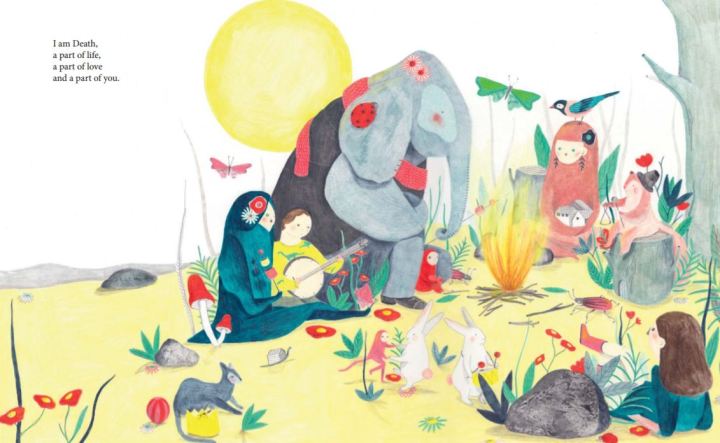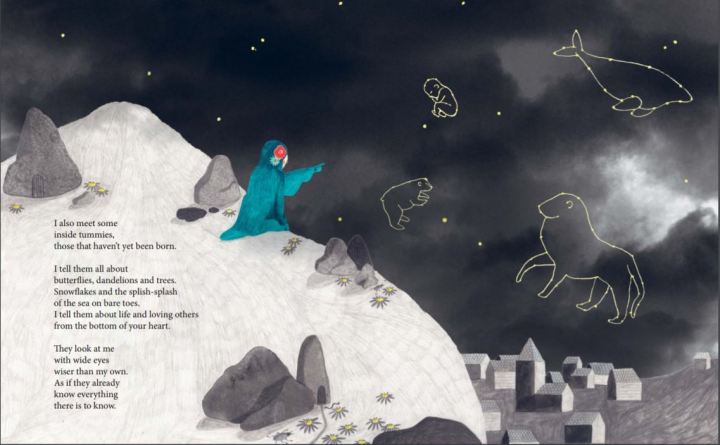In December we reviewed Elisabeth Helland Larsen’s poignant examination of mortality in Life and I: A Story About Death. Larsen kindly answered a few of our questions about her work as a children’s book author and visiting hospital clown to children in critical care units and in refugee camps. (No creepy clowns here!) Larsen lives in Oslo, Norway, and answered our questions through a series of email exchanges at the dawn of January 2017.
LFS: Can you tell me about the I Am series? [Life and I is one in a trilogy of books on the subject.] What prompted you to take on these topics?
EHL: This series is a result of my meetings with children and youth in various states of emergency over the past twenty years, and I’ve combined my own mix of fantasy and playfulness. For a very long time I’ve circled around the themes of death, life, and clowning. Nearly everything in my life deals with these topics. My aim is not to give any answers but to create conversations, reflections, or visual experiences. I believe the Norwegian publishing house Magikon and all the other countries that have translated the books are quite brave in taking on such a subject. These books wouldn’t be what they are without the talented illustrator Marine Schneider.
LFS: How did you get started as a clown? Do you work with a group?
EHL: I started with theater and clowning when I was very young because it gave me the freedom to do everything I wanted: meet people, travel around the world, and encounter different cultures. Playing, juggling, acrobatics, dancing, drawing–these are universal activities that each culture gives their own slant. After completing theater school in Paris, I became more and more involved in clowning in hospitals and refugee camps. Now I’m part of a group of hospital clowns in Norway called All Noses and I visit refugee kids as often as I can.

LFS: How do children react when they meet you in clown costume?
EHL: The red nose is like a universal passport into all cultures. It is incredible how laughter and playing can unite us despite different circumstances. The power of love, humor, and playing can help children survive overwhelming odds. Laughter keeps us afloat when life gets tough. I am so amazed to see the power to overcome in every single human being. I’ve only had positive reactions to me in clown character.
LFS: How do you prepare for a clown show?
EHL: These days I work in hospitals and I also tour a lot to promote my books, which I present through different kinds of performances than the ones I prepare for children in hospitals. I love to meet children and talk about books and big themes, especially taboo themes. Children are open to honest discussion about tough issues, but we need to be willing to have those conversations.
LFS: Where do you find inspiration for your books?
EHL: As humans we all have hundreds of stories inside our hearts, minds and bodies. Some of us feel the urge and need to write them on paper or transform them into art.
LFS: Has writing grown out of your work as a clown?
EHL: Writing has always been a important part off my life but in 2011 I became more serious about it after finishing a training program on writing children books at Norsk Barnebokinstitutt [the Norwegian Institute for Children’s Books].
LFS: What else would you like to tell me about your work?
EHL: I think that adults are duty-bound to encourage children to realize that life in today’s world can have meaning, but they need our guidance. I do what I can with my artistic tools, but we all have a responsibility to teach those who will one day lead the world.
Top photo by Christine Crüger. Reproduced with permission from the publisher.



